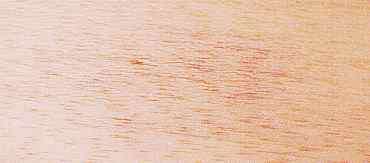
Taluto (Pterocymbium tinctorium)
Family:
Common names: Taluto
Distributed in: Indonesia, Malaysia, Myanmar, Philippines (Oceania and S.E. Asia)
Distribution overview: Widely distributed in the Philippine Islands. It is also reported to grow in lower Burma from Martaban to Mergui and Tenasserim and in the Andamans, where it is cultivated on plantations. Taluto is also reported to grow in the Malay Peninsula and Java.
Common uses: Boxes and crates, Building construction, Building materials, Construction, Fishnet floats, Floats, Matchboxes, Matches, Packing cases, Wooden shoes
Environment profile: Status unknown in many of its growth areas
Tree size: Trunk diameter is 100-150 cm
Colors: the heart isWhite to cream, Yellowand the sapwoodRed, Yellow.The grain isTangential surfaces show distinct ripples , the textureSeemingly coarse but actually fine and the lusterRadial surfaces without discoloration are lustrous
Natural durability: Susceptible to insect attack, Very little natural resistance when in contact with ground
Odor: No specific smell or taste
Kiln Drying Rate: Naturally dries slowly
Drying Defects: Distortion, Highly prone to staining
Ease of Drying: Thick Stock Requires Care
Comments: Light and soft timber This light and very soft timber is highly suitable for use as floaters for rafting heavy logs and for fish-net floats
Blunting Effect: Moderate
Carving: Very Good to Excellent Results
Cutting Resistance: Moderate to saw
Gluing: Fairly Easy to Very Easy
Nailing: Fair to Good , Fairly Easy to Very Easy
Planing: Fairly Easy to Very Easy
Resistance to Impregnation: Permeable sapwood
Response to hand tools: Sharp cutting edges prevent tearing
Sanding: Very Good to Excellent Results
Veneering qualities: Veneers easily, Veneers moderately easy
Screwing: Fair to Good Results, Fairly Easy to Very Easy; Turning: Very Good to Excellent Results
Polishing: Very Good to Excellent; Staining: Very Good to Excellent;
- Numerical data Metric
- Numerical data English
- Strength properties
- References
 |
 |
 |
 |
| Item |
Green |
Dry |
Metric |
| Specific Gravity |
|
|
|
| Density |
|
|
kg/m3 |
| Bending Strength |
323 |
495 |
kg/cm2 |
| Crushing Strength |
20 |
32 |
kg/cm2 |
| Hardness |
|
|
kg |
| Impact Strength |
|
|
cm |
| Shearing Strength |
|
|
kg/cm2 |
| Stiffness |
57 |
68 |
1000 kg/cm2 |
| Tangential Shrinkage |
|
|
% |
| Radial Shrinkage |
|
|
% |
| Weight |
|
|
kg/m3 |
| Maximum Load |
|
|
cm-kg/cm3 |
| Toughness |
|
|
cm-kg |
| Static Bending |
174 |
271 |
kg/cm2 |
|
 |  |  |  | | Item | Green | Dry | English | | Bending Strength | 4599 | 7044. | psi | | Crushing Strength | 295 | 458. | psi | | Maximum Crushing Strength | 1937 | 3104. | psi | | Static Bending | 2480 | 3866. | psi | | Stiffness | 823 | 973. | 1000 psi | | Specific Gravity | 0.29 | | | |
Density = medium
Chowdhury, K.A. and S.S. Ghosh. 1958. Indian Woods - Their Identification, Properties and Uses, Volume I - Dilleniaceae to Elaeocarpaceae. Published by the Manager of Publications, Delhi, India.Desch, H. E. 1954. Manual of Malayan Timbers - Volume II. Malayan Forest Records, No. 15. Malaya Publishing House Ltd., Singapore.Lauricio, F. M., Bellosillo, S. B., The Mechanical and Related Properties of Philippine Woods, The Philippine Lumber Journal, 12(5): A-H.Schneider, E.E. 1916. Commercial Woods of the Philippines: Their Preparation and Uses. Bulletin No. 14. Department of the Interior, Bureau of Forestry, Manila, Philippines.WCMC. 1992. Conservation Status Listing - Trees and Timbers of the World. World Conservation Monitoring Center-Plants Programme, Cambridge, CB3 ODL, United Kingdom.
| 







